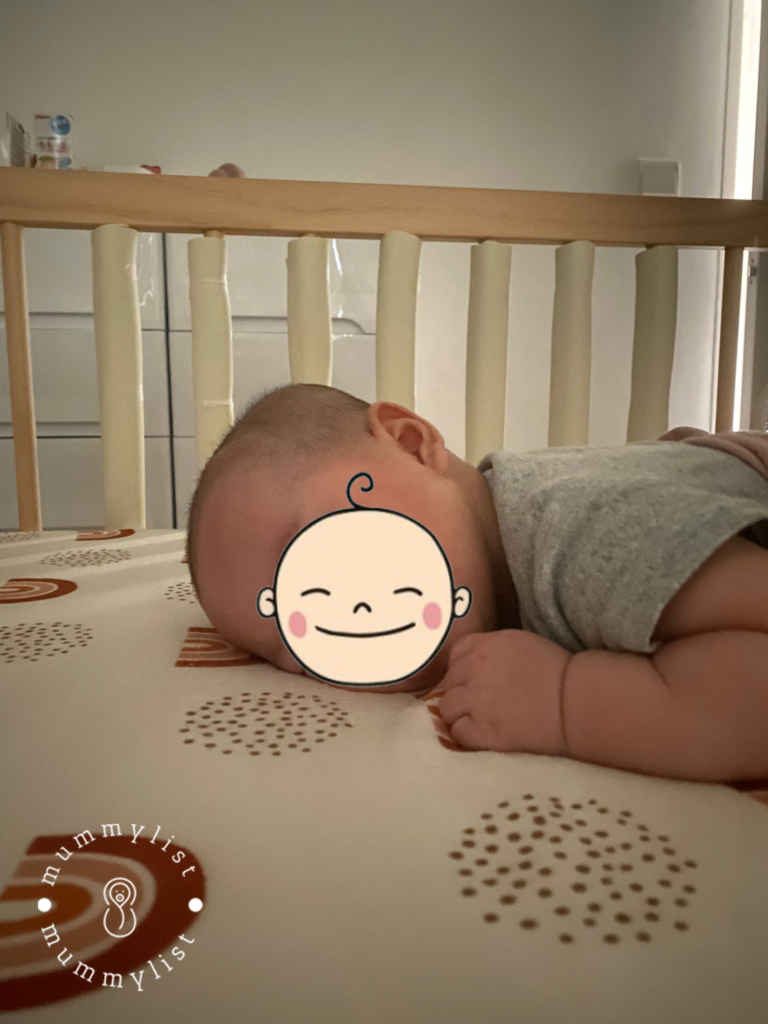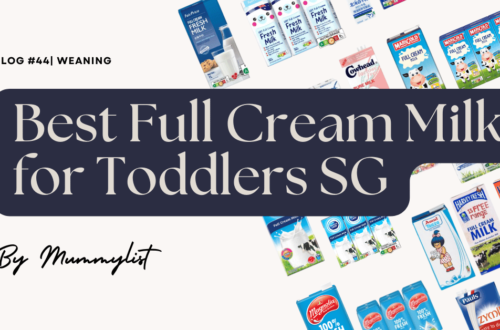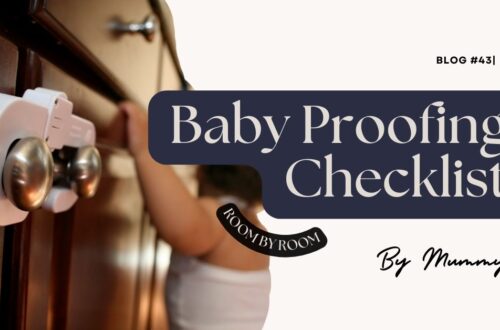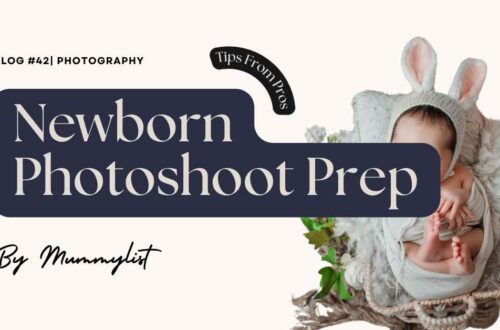I only recommend products and services that I use myself. This post contains affiliate links. If I you use these links to buy something I may earn a commission at no additional cost to you to support the on-going maintenance of the site. You can read the full disclaimer here.
As a parent to a newborn, the quest for uninterrupted slumber becomes both a necessity and a cherished triumph. Here, I’ll share the baby sleep essentials and learnings that helped me transform restless nights into peaceful ones, leading my little one to sleep through the night. Sweet dreams await!

THE IMPORTANCE OF GOOD QUALITY BABY SLEEP
Quality sleep is essential for newborns as it plays a pivotal role in their overall development. A well-rested baby is more likely to thrive physically, mentally, and emotionally. Adequate sleep supports the growth of neural connections in the brain, contributing to cognitive development and emotional regulation.
Beyond the benefits for the baby, sufficient sleep is equally crucial for parents navigating the challenging landscape of early parenthood.
Despite the undeniable importance of sleep, both newborns and parents often face common sleep challenges. From frequent night awakenings to the unpredictability of nap schedules, sleep can become a source of stress for everyone involved.
Even with the help of a super confinement nanny, the challenges of sleep with a newborn continued to plague us. Fortunately I started proactively reading up more on the topic and started implementing what I learnt to great success. The following suggestions and recommendations are based on what worked personally for my baby and are not medical advice. Do read up more yourself and consult a medical professional should you need help.
CREATE A PROPER SLEEP ENVIRONMENT
I cannot emphasize this enough. A proper sleep environment is crucial for baby sleep as it influences both the QUALITY and SAFETY of their rest. As such, creating an optimal sleep setting is the very first step to a baby’s good night sleep.

Here’s what I included in baby’s nursery to ensure that she has a proper sleep environment:
- Firm Mattress: Placed in a safety-approved crib or bassinet. We got both the cot and mattress together from Beblum. Both highly recommended by our group of friends.
- Fitted Bed Sheets: Soft and breathable material bed sheets. Avoid loose or excessive bedding to reduce risk of suffocation. I got some staples from Mothercare and pretty prints from another Shopee Brand.
- Fitted Water Proof Mattress Protector: To prevent hassle of changing mattress. This is in case of any spit ups, leakage of pee etc during nap or bedtime. So far so good!
- Comfortable Sleepwear: Appropriate for the room temperature to prevent overheating.
- Cool Environment: Babies are sensitive to temperature changes. Maintaining a comfortable room temperature ( 23-25°C) helps prevent overheating or chilling, promoting better sleep.
- Blackout Curtains: Complete darkness during naps and bedtime help to promote melatonin which aids in baby’s sleep.
- White Noise Machine: A consistent, gentle background noise can help drown out disturbances.
More Baby Sleep Environment Tips
Based on recommendations by sleep experts, it is also ideal to keep the sleeping environment more calming and non-stimulating. As such, I did not hang any toys or mobiles in the nursery, keeping everything bare as much as possible.
Also, it is recommended to NOT have any pillows, blankets, toys inside the bed due to risk of suffocation or strangulation. Personally, I did put a head shaping pillow and blanket tucked under/beside her during nap time in the day. But it was under constant supervision by either myself or nanny, and never at bedtime and before she started being more mobile.
FOLLOW WAKE WINDOWS & SLEEPY CUES
Following wake windows and paying attention to sleepy cues are effective strategies for helping babies establish healthy sleep patterns. From what I learnt, both approaches are grounded in understanding and responding to a baby’s natural sleep-wake cycles.
Following Wake Windows
Wake windows refer to the duration of time a baby can comfortably stay awake between naps or bedtime. By aligning sleep with the natural rhythms of wakefulness, you ensure that the baby is neither overtired nor under-tired when it’s time to sleep. As such there will be so much less fighting to go to bed.
What’s more, consistent wake windows contribute to the establishment of a predictable sleep routine. Babies thrive on routine, and having a regular schedule helps regulate their internal body clock, making sleep more predictable.
| Baby’s Age | Appropriate Wake Window |
| < 1 Month | 35-60 min |
| 1-2 Months | 60-90 min |
| 3-4 Months | 75-120 min |
Paying Attention to Sleepy Cues
Babies exhibit subtle signs of sleepiness, such as rubbing their eyes, yawning, eyebrows turning red, or becoming fussy. By recognizing and responding to sleepy cues promptly, you intervene before the baby reaches a state of overtiredness. This proactive approach aids in a smoother transition to sleep
On top of that, it also allows parents to initiate a soothing bedtime routine at the right time. This routine helps signal to the baby that it’s time for sleep, promoting a sense of security and readiness for rest.
I started implementing both around 3 months. We quickly noticed that baby started going to sleep much quicker and with less fussiness. Compared to pre-implementation days, where she could take up to 1 hour of crying and fussying before going to bed, we now were only looking at 5-10 mins of carrying before we went to sleep. Improvement of leaps and bounds.
FOLLOW THE EAT- PLAY- SLEEP Routine
The “Eat-Play-Sleep” routine is a popular schedule for infants that involves feeding, engaging in play or activity, and then followed by a nap or sleep. This routine is designed to establish healthy sleep patterns, contribute to better sleep quality, and create a predictable schedule for both the baby and the caregiver.
Here’s how the “Eat-Play-Sleep” routine supports better quality sleep:
Prevents Sleep Associations with Feeding
By placing feeding at the beginning of the routine, the baby is less likely to develop a strong association between feeding and falling asleep (sleep prop!). This helps prevent the baby from relying on nursing or bottle-feeding as the primary means to initiate sleep, fostering the development of independent sleep habits.
Encourages Full Feedings
Feeding is prioritized at the start of the routine, ensuring that the baby gets a full and satisfying feeding session. A well-fed baby is more likely to feel content and comfortable, promoting longer periods of sleep. Also, babies are more likely to sleep for longer stretches during the night when their nutritional needs are adequately met during the day.
That’s absolutely true for my case! When I upped my baby’s day feeds, she managed to drop 2 night feeds and sleep for 11-12 hours straight.
Promotes Wakefulness and Engagement
Following the feeding, the “Play” or activity phase engages the baby, promoting wakefulness and alertness. This helps ensure that the baby is fully awake before transitioning to sleep, reducing the likelihood of a short nap due to residual sleepiness.
I also take the opportunity to get baby to practice plenty of tummy time. music time, trying out new toys and more so that she can “exhaust” herself. In my case, I find that if baby is just stoning and doing nothing much that she doesn’t tire out or sleep as well. But this was more relevant after 3 months when the wake times are a little bit longer and there’s more time to do things other than basic hygiene and feeding.
Do however take note not to introduce any new or overly stimulating activities too close to sleeping time as that could backfire. This happened to us a few times until we learnt our lesson and now allow her at least 30 mins of wind down time (before nap times in the day) and 1 hour of wind down time (before bedtime).
NO BABY SLEEP PROPS (AFTER 4 MONTH OLD)
Sleep props, also known as sleep associations or aids, are objects, actions, or conditions that a newborn or infant associates with falling asleep. These props provide comfort and security, helping the baby transition from wakefulness to sleep. While they can be beneficial, it’s essential to strike a balance, as heavy reliance on sleep props may lead to difficulties when the baby wakes during the night.
For us, during the initial months of confinement up till the 3rd month, we relied quite heavily on sleep props to help baby nap or go to bed. These included the use of a pacifier, rocking and patting her to sleep, and swaddling her. These however were hit and miss and we could not consistently replicate success so either nanny or ourselves would struggle for super short naps, random nap schedule and multiple wakings through the night.
Weaning off Baby Sleep Props
In preparation for nanny leaving after baby’s 100th day, I started to read up and learn about not relying on sleep props for better sleep. Following that these were some of the changes we made:
- Weaned baby off the pacifier, teaching her to self soothe by putting her fingers to her mouth instead
- Slowly transitioned from her zip up swaddles and cloth swaddles to sleeveless sleep sacks where her hands are out and free to self soothe. This was also essential because she had started to flip making swaddles dangerous for her.
- Followed wake windows that are age-appropriate and put her in bed once time was up, or when we saw sleepy cues. Because she was appropriately tired, she did not require as much rocking or patting to bed (usually less than 5 mins)
- Put her to bed awake but slightly drowsy instead of asleep and let her fall asleep in the cot by herself instead of in our arms. This is so that she will not wake up in the cot and feel alarmed that we have left her in her sleep.
- Slowly reduced milk intake during night feeds gradually (by 10ml each time) while increasing day feeds simultaneously and eventually dropping the night feeds altogether.

HAVE A PROPER SLEEP ROUTINE
Last but not least, we made sure to establish a proper sleep routine to help with the development of healthy sleep habits from young.
Benefits of Baby Sleep Routine
- Helps align the baby’s natural body clock with the day-night cycle, promoting more restful sleep during night time.
- Babies learn to associate these cues with bedtime, making it easier for them to self-soothe and fall asleep independently.
- Knowing what to expect before bedtime or naptime reduces anxiety, helping babies feel more comfortable and relaxed as they prepare for sleep
- When parents consistently follow a set routine, it promotes a unified approach to sleep, making it easier for the baby to adapt and understand sleep expectations.
- Creates positive associations with sleep, making bedtime and naps a calming and enjoyable experience for the baby.
What’s In A Sleep Routine?
Creating a proper sleep routine for a baby involves a sequence of calming activities that signal to the baby that it’s time to wind down and prepare for sleep. Keep in mind that the routine may vary based on the baby’s age, individual preferences, and developmental stage. Here are some things you can consider:
- Pre-Bedtime Preparation (15-45 minutes before sleep):
- Dim the lights in the room to create a calm and soothing atmosphere.
- Keep interactions with the baby calm and gentle to avoid overstimulation.
- Warm Bath:
- Give the baby a warm bath as part of the bedtime routine. This can be a soothing and relaxing activity. Optional for nap time.
- Massage or Gentle Touch:
- Provide a gentle massage or use soft touches to help the baby relax. This can be a comforting and bonding experience.
- Diaper Change and Pajamas:
- Change the baby’s diaper and dress them in comfortable pajamas suitable for the current room temperature.
- Story or Lullaby:
- Incorporate a short story or sing a lullaby to create a calming atmosphere. This step helps signal that bedtime is approaching.
- Turn Off Lights:
- Turn the lights off to signal that it’s time for sleep.
- White Noise:
- Turn on a white noise machine (not music) to create a consistent background noise.
- Goodnight Sleep Phrase:
- Offer a final goodnight with a consistent sleep phrase repeated a few times used by ALL caregivers, reinforcing the cue to sleep. Example: “Goodnight [Baby Name] It’s time to sleep!”
Help Baby Sleep Well So You Can Too!
Having heard about so many nightmare stories about parents’ who have not slept well for years was truly one of my biggest fear about having a baby. Thankfully with the help of the internet, baby sleep experts and more, I’ve managed to help my baby sleep well from a young age and get back my 8 hourly uninterrupted sleep once more! Hopefully you will be able to do so too!
Attribution: All Baby Photos Are My Own With Cartoon Baby Face by Freepik







5 Comments on “Baby Sleep Essentials & Tips That Helped My 4 Month Old STTN”